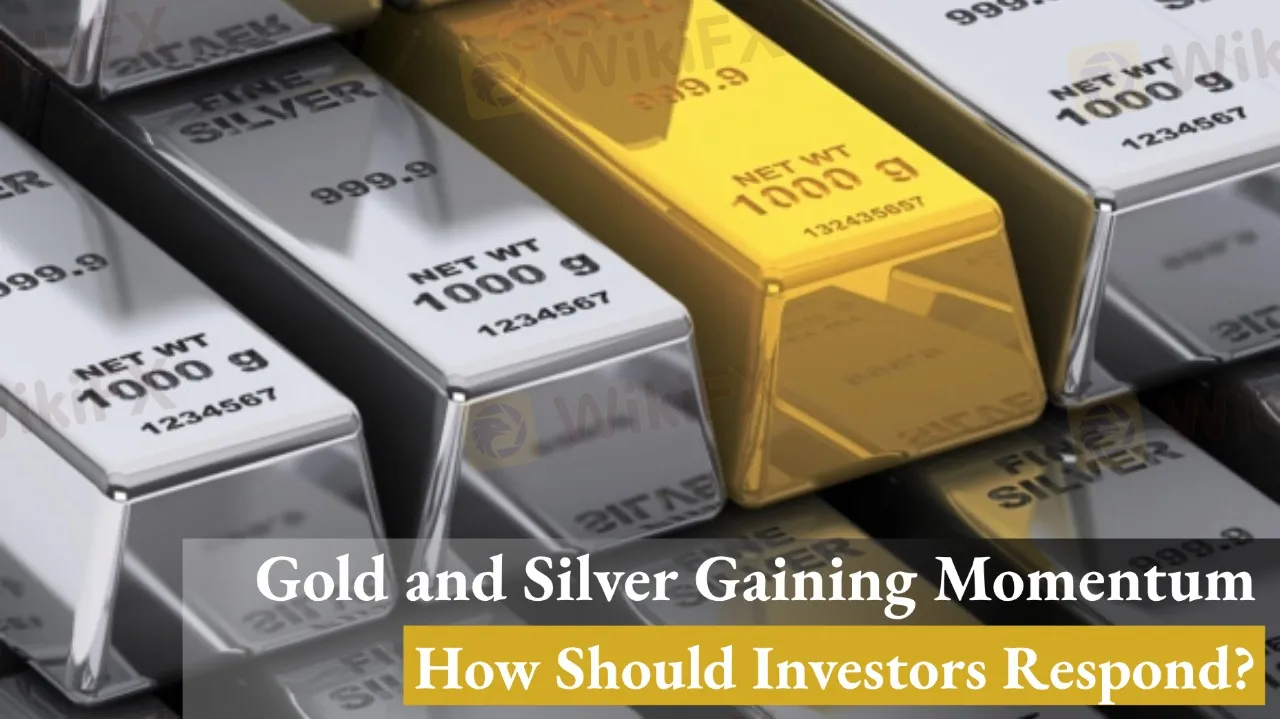Gold and Silver Gaining Momentum—How Should Investors Respond?
Abstract:With rising risk aversion and shifting rate expectations, Deriv analysts reveal new insights on gold and silver trends!

About Deriv
Deriv is a globally recognized multi-asset trading platform, operating under multiple regulatory licenses across various jurisdictions. Since its establishment, the company has focused on delivering a wide range of trading instruments—including forex, commodities, stock indices, cryptocurrencies, and derivatives.
Its key strengths lie in platform stability, fast order execution, and educational resources tailored to both beginners and experienced traders. For newcomers, Deriv offers demo accounts and an intuitive interface; for professionals, tools like strategy testers and advanced analytics are crucial. With multilingual customer support and a growing international presence, Deriv continues to enhance trading experiences globally.
Bullish Outlook on Gold and Silver, but Caution Advised
In its latest market commentary, Deriv analysts highlighted a potential rally in the precious metals market, driven by multiple structural forces.
Gold
Gold prices have climbed steadily, recently approaching the $3,450 per ounce level—marking a multi-month high. According to Deriv, this rise is primarily fueled by heightened risk aversion and changing monetary policy expectations.
Recent inflation data came in softer than expected, prompting markets to move forward their rate-cut projections—some now eyeing September for the first cut. This environment makes non-yielding assets like gold more attractive.
The weakening U.S. dollar has also added momentum. As gold is priced in dollars, a softer greenback boosts demand from foreign investors, pushing prices higher.
Silver
Compared to gold, silver has shown a more restrained performance, hovering around $36 per ounce. Deriv analysts note this is due to silvers dual role as both a safe-haven asset and an industrial metal used in solar panels, electronics, and EVs.
Uncertain global growth and slow manufacturing recovery have capped industrial demand. Yet, ongoing geopolitical tensions and dollar weakness have helped silver maintain elevated levels. Deriv forecasts that if the economic outlook improves or the dollar remains weak, silver could break above $36.50 and test $37 or even $38.
Technical Outlook
Technically, if gold breaks past the psychological barrier at $3,500, it may trigger a new upward wave. On the downside, $3,300 to $3,185 is seen as a strong support zone.
For silver, a sustained breakout above $36.50 could signal a move toward $37.80. If correction sets in, $34.80 is viewed as a near-term support level.
Clear Trend, Yet Rising Risks
Despite a generally bullish setup, investors face several challenges when navigating the precious metals market:
1. High Volatility Complicates Entry and Exit Timing
With frequent macroeconomic releases and rapidly shifting sentiment, gold and silver can swing sharply. A single rumor around interest rates could trigger dramatic moves. Deriv advises traders to avoid chasing momentum blindly and instead define clear entry and exit plans.
2. Emotion-Driven Markets Can Undermine Technical Signals
In sentiment-driven environments, traditional technical indicators can lose accuracy. Both gold and silver appear technically overbought, yet buying pressure remains. This suggests that sentiment is a key driver, and investors should balance technicals with macro fundamentals.
3. Mixed Signals From Fundamentals
Precious metals are influenced by both bullish and bearish forces. For instance, rate-cut expectations lift gold, while slow industrial demand weighs on silver. In such a scenario, flexible and neutral strategies are more effective.
4. Risk Management is More Critical Than Ever
Clear trends may tempt traders to over-leverage. Deriv recommends a conservative approach to position sizing and the use of stop-loss orders. Proper capital control not only helps limit losses but also allows traders to exit profitably if the trend reverses.
Why Are Gold and Silver So Sensitive to Markets?
Before investing in precious metals, it's essential to understand the forces that influence their prices. Here are some key concepts:
Gold: Inflation Hedge and Currency Substitute
Gold has long been seen as a hedge against inflation and currency depreciation. When rates fall or future currency value is in doubt, gold demand typically rises.
During financial turmoil, gold acts as a “non-sovereign” store of value, making it highly attractive.
Silver: Primarily Driven by Industrial Demand
While silver shares golds safe-haven appeal, its price is more closely linked to industrial usage—particularly in fast-growing sectors like solar energy and semiconductors.
This makes silver more reactive to economic cycles and manufacturing data.
Interest Rates: A Direct Impact
Lower real interest rates (nominal rate minus inflation) reduce the opportunity cost of holding gold or silver, boosting their attractiveness.
Conversely, in a high-rate environment, investors favor yield-bearing assets like bonds, reducing the appeal of metals.
U.S. Dollar Correlation
A weaker dollar makes dollar-denominated assets like gold and silver cheaper for foreign buyers, driving demand.
Conversely, a stronger dollar tends to suppress metal prices.
Follow the Trend, but Plan Your Moves
Deriv analysts maintain a bullish outlook for gold and silver in the short to medium term, driven by supportive macro conditions and geopolitical uncertainties. However, they caution that investors must prioritize risk control and strategic planning.
For bullish traders, gradual position building combined with technical confirmation may offer the best risk-reward setup. Cautious investors might prefer testing strategies via demo accounts or consider low-volatility vehicles like ETFs.
Precious metals serve as emotional barometers of the market and anchors of perceived value. In times of uncertainty, they become more than just commodities—they become symbols of confidence. The real test for investors lies not just in identifying the trend, but in riding it with discipline and clarity.
For more information on brokers, feel free to visit our official website (https://www.WikiFX.com/en) or download the WikiFX App to help you find the most trustworthy broker and ensure your trading experience is safer and more reliable.

Read more

Hope You are Not Losing Bucks with These Forex Trading Tactics
Not finding forex investments great? Have lost money due to these investments? It may be due to some mistakes. Here's a detailed guide on the forex mistakes you should not commit.

FortuixAgent Review 2025: Is it Scam or Legit?
Is FortuixAgent a trustworthy trading platform or just another scam in disguise? In this 2025 review, we investigate FortuixAgent’s background, licensing claims, features, user experiences, and red flags to help you make an informed decision.

No Regulation, Revoked Licence: Is Tradehall Safe to Use?
In the fast-growing world of online trading, safety and regulation must always come first. Traders need to choose brokers that are properly licensed and follow the rules. Sadly, not all brokers meet these standards, and Tradehall is a clear example of this.

Retirement Dreams Shattered: Don't Do This To Yourself!
Two retired Malaysian men have collectively lost more than RM1.14 million to fraudulent investment schemes promoted on social media platforms.
WikiFX Broker
Latest News
ZFX: A Closer Look at Its Licences
XM Rolls Out New Forex Trading Competition Platform for 2025
Should you buy or sell US dollars in the next three to six months?
Tradehall Broker Review 2025: Read Before Trade
Inside MBI: The Billion-Dollar Ponzi Scheme That Shook Malaysia
Danske Bank expects the European Central Bank to make its final interest rate cut in September.
Retirement Dreams Shattered: Don't Do This To Yourself!
EU Regulators Imposed Over €71M in Sanctions in 2024, ESMA Calls for Enforcement Convergence
No Regulation, Revoked Licence: Is Tradehall Safe to Use?
Philippines Sets Southeast Asia’s First Crypto Regulatory Framework
Rate Calc

